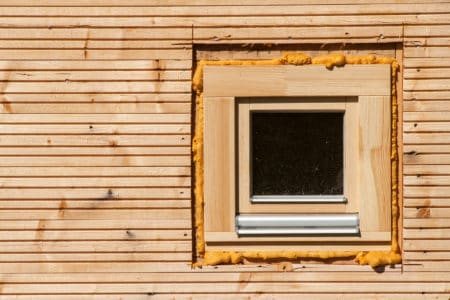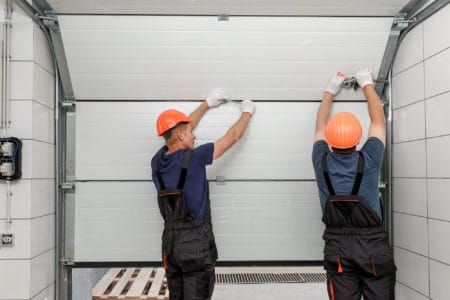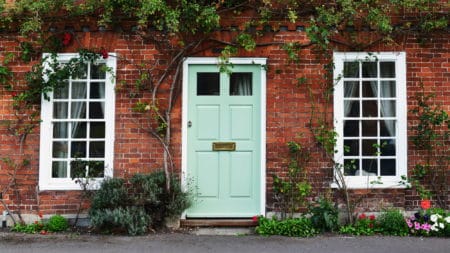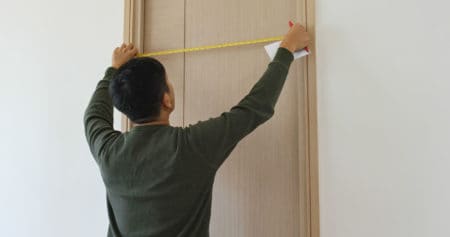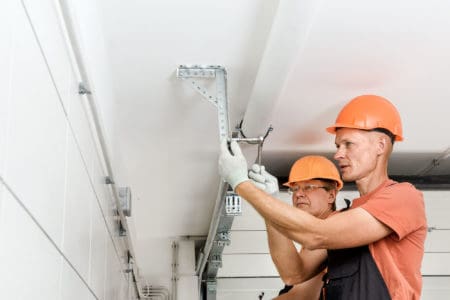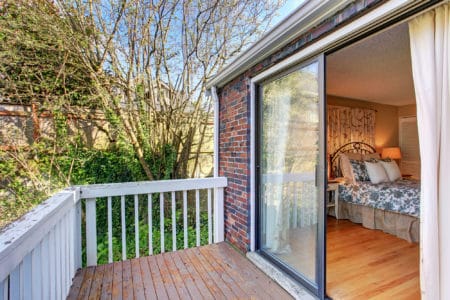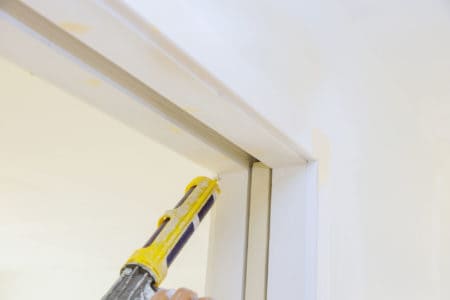You can’t control the noise levels outside, but you can regulate the sound inside your home. Whether it’s the neighbor’s dog disturbing you while you work, or the sound from traffic, noise-canceling windows really do help.
Knowing how to soundproof a window makes your inside spaces a haven for calm and tranquility. Soundproofing windows is easy with our comprehensive guide; plus, we share hints and tips for better results.
Key Takeaways
- Use window inserts to reduce external sound and improve insulation.
- Apply acoustic foam or shrink film window kits for a cost-effective solution.
- Hang heavy, soundproof curtains or blinds to block noise and add insulation.
- Install weatherstripping or acoustic caulk to seal gaps in window frames.
Can You Soundproof an Existing Window?
There are several ways to soundproof an existing window. From window inserts to soundproofing curtains, each has its merits.
One of the more effective ways to reduce noise from outside is with window inserts. They reduce volume levels by 70 percent on single-pane and 50 percent on double-pane windows.
For new constructions, or if you were considering replacing all your windows, double or triple-pane units are the best way to limit noise from outside. However, double and triple-pane windows are expensive, and there are cheaper do it yourself ways to achieve a quieter environment.
What Is Sound Transmission Class?
Sound transmission class (STC) is the scale used to rate windows for noise reduction. It has been the standard of measuring airborne sound reduction through internal and external partitions since 1961.
A typical soundproof window, like using inserts, measures between 48 and 54 on the scale. So, a 98-decibel motorcycle engine would be reduced to 44 decibels indoors (98 minus 54 equals 44 decibels).
Forty-four decibels is the equivalent of being inside a library or listening to quiet conversation.
How to DIY Soundproof a Window
Noise pollution is frustrating, especially when it affects your sleep or work life. Many of us have worked from home since Covid hit, and having a space to concentrate is crucial. Nobody wants unnecessary distractions.
Here are some easy ways you can block out the sound from the world outside.
Window Inserts
Window inserts are not the cheapest option for sound reduction, but they are one of the most effective. One window insert will typically cost you between $350 to $800, depending on whether you DIY install or get a professional.
At $800, you could probably replace the entire window with double-panes, but at the lower end, it is still a cost-effective method of noise reduction. So, how do they work?
The insert sits about five inches in front of the windowpane on a fitted frame. This creates an air gap that absorbs sound and reduces vibration. It means you get better volume-blocking performance than double-pane windows.
The best inserts are constructed from laminated glass, which means they have two sheets of glass with a laminated layer to block vibrations. They also help reduce heat loss because of the thermal barrier between the insert and the windowpane.
Pros
- Reduces sound by half.
- Looks neat when fitted.
- You can still look out of the window.
- Doesn’t block light.
- Reduces heat loss.
Cons
- More complex to install than other methods.
- May need a professional contractor.
- Can be as expensive as window replacement.
Acoustic Foam
Recording studios are filled with acoustic foam because it has excellent sound absorption qualities. It is constructed from open-cell polyurethane and comes in large sheets that are cut to size. Installing soundproof foam in your windows will reduce the outside noise considerably.
However, it is more commonly used as a building material between walls, floors, and ceilings rather than plugging windows. It also blocks out the light, rendering your room completely dark. It works by absorbing sound and dissipating it as heat.
The great news is acoustic foam is relatively inexpensive, costing between $20 and $40 for a pack of six blocks.
Pros
- Easy to install.
- Cost-effective method.
- Cheap to buy.
Cons
- Doesn’t look aesthetically pleasing.
- Blocks all the light.
Shrink Film Window Kits
Window kits like this Frost King Shrink Kit are an excellent way to insulate your window and reduce sound. It is easy to install and comes with everything you need to cover your windows.
Simply measure the window opening, including the frames, and cut the film to size. Run the double-sided tape along the flat surfaces of the window frame and peel the backing off. Now secure the top of the film, then the sides, and finally the bottom.
Run your finger along the tape seam to ensure it properly sticks. Now grab a hairdryer and place it on the hottest setting. Aim the hairdryer at the shrink film, and watch it stretch tight as it heats.
Window kits cost as little as $5 to $15, making them the most cost-effective way of reducing outside noise.
Pros
- Cheapest method of soundproofing.
- Easy to install.
- Doesn’t block any light.
- Insulates as well.
Cons
- Looks cheap.
- Temporary solution.
- Least soundproof method.
Soundproof Curtains
Soundproof curtains are typically made from heavy material like cotton or velvet and hang from above the window down to the floor. They are also excellent for insulating and soundproofing doors.
They get their soundproofing qualities from a vinyl lining (or similar material) that blocks sound as it enters the home. They also reduce volume levels inside your home by absorbing echoes.
You should only consider curtains as a sound-reducing option if you live in areas with lighter noise pollution. They are not going to deliver the same performance as window inserts. However, they block out light, which is perfect for light sleepers and night shift workers.
Depending on the size, quality, and material, you should expect to pay somewhere between $30 and $100.
Pros
- Increases insulation.
- Aesthetically pleasing.
- Blocks out the light.
Cons
- Not as effective as some methods.
- Only suitable for light sounds.
Install Storm Windows
Storm windows reduce the amount of noise filtering into your home. An extra layer in front of your exterior window pane also increases the amount of insulation.
Storm windows are not the most cost-effective method of reducing exterior noise, but they do protect your windows in extreme weather. However, unless you have the necessary DIY skills, they are tricky to install. If not, you will need a professional contractor.
Keep In Mind
Don’t install storm screens if you have vinyl windows because it could cause a heat build-up that warps the window frames.
The national average cost of installing storm windows ranges from $2,000 to $5,000, depending on how many you need and their size. It is not a budget solution to your soundproofing problems, but it is an effective one.
Pros
- Protects against the weather.
- Prolongs the life of your window.
- Enhances the exterior of your home.
- Increases insulation.
Cons
- As expensive as window replacement.
- Requires a professional contractor.
Acoustic Caulk
Caulking along the edges of your windows to reduce gaps also reduces the amount of noise seeping into your home. Not only does it make the window airtight, but it seals against water ingress too. So, that’s a triple whammy!
And the best news is window caulk is super-cheap; plus, you don’t need a great deal of skill to complete the work. You should expect to pay less than $20 for a tube of acoustic caulk, like this Acoustical Caulk. Although, keep in mind that you may need to purchase a caulk gun if you don’t already own one.
Simply cut the nozzle at a 45-degree angle, insert the tube into the gun, and squeeze the trigger. Always start in the corner and at the top of the frame, working downward. When you reach the middle of the line, swap to the opposite corner.
It can be stored away, ready to reuse, and one tube goes a long way. However, it only works for sealing gaps in window and door frames. It won’t perform the same way as window inserts at reducing sound because it is only as effective as your windows.
Pros
- Easy to use.
- Easy to master.
- One tube covers a lot of ground.
- Can be stored and reused.
Cons
- Only suitable for sealing gaps.
- You will need a caulk gun.
Weatherstripping
Weatherstripping is an effective way to reduce air leakage in windows and doors. And when you reduce gaps, you also decrease noise pollution and increase insulation. The more sealed your windows and doors are, the better it is for energy consumption.
Weatherstripping is easy to install. It has a sticky backing that adheres to your window frames and a furry weather-facing side that presses against the gap to seal it closed. You can buy foam stripping, which is slightly cheaper.
You should expect to spend anywhere between $30 to $60. One pack will likely cover two or three windows, depending on the size of your openings. This makes it a more expensive option than acoustic caulk, yet it does virtually the same job.
On the plus side, you don’t need to wait for weatherstripping to cure before it starts to work. Once it is fixed in place, it restricts air leaks. However, unlike caulk, which lasts two to five years, weatherstripping should be replaced every year.
Take Note
Weatherstripping is limited in how it performs because of the quality of your windows. If you have single panes, you will still get outside noise.
Pros
- Seals window and door frames.
- Easy to install.
- Relatively inexpensive.
Cons
- Limited sound reduction.
- Needs replacing every year.
Upgrade Your Windows
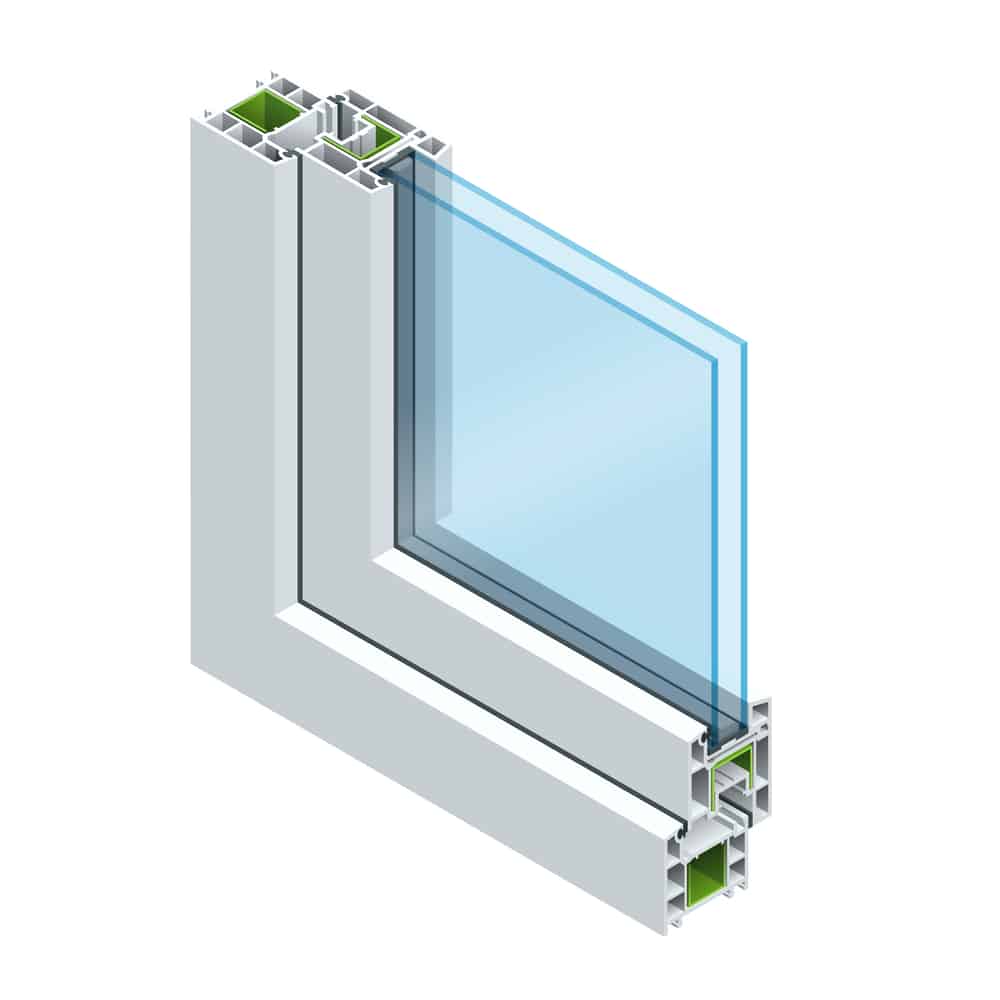
You would probably only consider this as an option if you had a lot of leaky or old windows. If you are performing a remodel or constructing a new home, consider fitting double-pane windows.
They are 50 percent more effective at reducing noise compared to single-pane varieties. And if you install window inserts, you can reduce sound leakage even more. Double-pane windows will improve the exterior of your home and increase its value.
Replacing your windows should be done professionally. If you tried and got it wrong, you could cancel out all the insulating and soundproofing qualities of the windows. Also, you will get a guarantee for a professional installation, which gives you peace of mind.
You will need to budget between $500 and $600 per window, depending on the size of your opening. If you live in a large home, the total costs will run into thousands. However, if you live in a small apartment, it might be a cost-effective option.
Just be prepared for the mess and upheaval while the work takes place.
Pros
- Improves the look of your home.
- Increases the value.
- Fifty percent more effective than single-pane windows.
- Professional work is guaranteed.
Cons
- The most expensive option.
- Requires a professional contractor.
- Messy and creates upheaval.
Quilted Fiberglass Panel
To enhance noise reduction, the thicker and denser the material, the better. Quilted fiberglass panels are heavier than curtains and fit snugly to the window, reducing noise entering the home. Curtains sit in front of the window and are less effective.
And because they hang from hooks directly above the window, they close the gap between the top and bottom. The panels have metal eyelets that insert into hooks or a pole to keep the panel against the window. Some even have strong velcro to create a super-tight seal.
These panels are less attractive than curtains, but you can combine the two for maximum protection. Covering your windows with sound blockers like quilted fiberglass panels is an easy solution to sound reduction, but they will also block the light coming into the room.
If you are a night shift worker or sensitive to light, this is an additional bonus. This Audimute Sound Barrier is an excellent example; however, these products are not cheap. You should expect to pay between $80 and $100.
Pros
- Easy to install.
- Can be removed quickly.
- Work well when combined with curtains.
- Creates a close seal with the window.
Cons
- Expensive compared to other methods.
- Looks unsightly.
- Blocks out all light.
Soft Furnishings
Reducing sound vibrations is one of the simplest ways to cut exterior noise. Sofas, cushions, and other soft furnishings act like a sponge soaking up sound vibrations.
This minimizes echo in the room and controls the volume levels. Imagine voices in an empty room compared to a room with furniture, and you’ll get what we mean.
The great news is this method costs you nothing because you can use your existing furniture. However, if you want to buy more scatter cushions, who are we to say no (you can never have enough scatter cushions).
Pros
- Easy to execute.
- Use existing furniture.
- An excuse to buy more cushions.
- Immediate impact.
Cons
- Not as effective as other methods.
- You need to rearrange your furniture.
Soundproof Blankets
We’ve probably all seen those woven heavy blankets that the furniture removal companies use. They cover your precious belongings in transit and absorb movement. Well, those same blankets also do a wonderful job of screening your windows against sound vibration.
Simply cut the blanket to size and attach velcro strips to the blanket and window frame. It holds it against the window and absorbs exterior noises.
You can purchase these blankets in multiple packs for between $80 and $130, and they can be cut to size to fit all your windows. They also insulate against heat loss.
Using moving blankets is a temporary fix because they don’t look that attractive, but they are effective.
Pros
- Can be cut to any size.
- Comes in multi-packs.
- Easy to install.
- Improves insulation.
Cons
- Looks unsightly.
- Only a temporary measure.
Build a Window Plug
A window plug is simple to construct and very effective at blocking sound. All you need are accurate measurements. Grab a tape measure and measure the width and height of the window.
Next, cut a sheet of plywood to the correct size and attach two handles for better grip. If you want to go that extra mile, you could line the window-facing side with foam for better sound insulation.
You won’t need to spend more than $40 or $50 on the materials, depending on the size of the window, so it is one of the cheaper methods. And to complete one window plug should only take about an hour.
Constructing window plugs requires some DIY skills, and they are unsightly both inside and out, but they are effective.
Pros
- Easy to make.
- Excellent soundproofing qualities.
- Insulates against heat loss.
Cons
- Requires some DIY skills.
- Can look unsightly.
Thick Blinds and Shades
Thick blinds cancel out sound and are straightforward to install. They work in the same way as thick curtains in that they insulate against heat loss and reduce exterior sounds.
The best way to fit them is to measure the window recess, so the blinds lay flat against the window. Installing them on the outside of the recess allows noise pollution because it leaves a gap.
Blinds and shades are also a great way to control the amount of light in your home. For the best sound reduction, try cellular blinds like these Bali Blinds.
Blinds can cost as little as $30, but for a premium window shade, you could spend over $100. They look good, can stay up all year round, and help to insulate your home against heat loss.
However, blinds are not the most effective sound blocker unless used in conjunction with other methods.
Pros
- They look good.
- Stay up all year round.
- Insulates against heat loss.
- Helps to control solar glare.
Cons
- Not as effective as other methods.
External Window Shutters
External window shutters give the exterior of your home a farmhouse look, softening stark outside walls and adding curb appeal. You will need good DIY skills to install window shutters or opt for a professional to carry out the work.
Window shutters consist of two hinged panels fixed permanently to the outside wall of your home, either side of the window. They are typically slatted and made from wood, so they do need some care and attention.
Window shutters are not a cheap alternative, so it might be better to upgrade your windows instead. You are looking at similar prices to installing storm windows, at around $350 to $800 per window.
However, exterior window shutters add a level of security that other methods fail to do. Plus, they give you a sense of privacy.
Pros
- Look stylish.
- Enhances the exterior of your home.
- Permanent fixture.
- Improves security.
Cons
- Expensive to install.
- Require maintenance.
Interior Window Shutters
Installing internal window shutters improves sound pollution and insulates against air leakage. They look stylish, enhancing the window, and once fitted, give a permanent solution.
Interior shutters are bespoke, so they require a professional company to visit your property and take accurate measurements. This is not a cheap service, typically costing thousands of dollars.
You also have a delayed period because the shutters need to be manufactured to specific dimensions to fit your windows. However, once in situ, they are simple to operate and remove the need for curtains.
Pros
- Look stylish.
- Permanent solution to soundproofing.
- Insulates against air leakage.
- Enhances the window.
Cons
- Expensive to install.
- Requires a professional.
Vinyl Window Film
Vinyl window film is like a giant soundproof sticker for your window. It has a backing that peels off like sticky tape. Installation is pretty straightforward, although it does require a steady hand. If you make a mistake, you will have ridges on the smooth surface of your window.
To fit the window film, you need to wet the window before you apply the covering. Then, using a flat implement like a paint scraper tool, you need to squeeze out the excess water for the film to bond.
Window vinyl not only reduces sound, it also reinforces the window against breakage. However, they are not a permanent solution and probably need to be reapplied every year. As for cost, window vinyl ranges from $10 to $50.
Pros
- Simple to install.
- Relatively inexpensive.
- Protects the window against breakages.
- Can be removed easily.
Cons
- Only a temporary solution.
- Can look cheap.
Soundproof Window Kits
Soundproof window kits, like this Magnetic Window Insulation Kit, work wonders for sound and heat insulation. They are easy to install because they have a magnetic frame that connects to the window covering to create a solid seal.
This product is tear-resistant, prevents heat and cold loss, and is reusable and washable. When you seal your window with a secondary layer, you create a barrier against sound pollution.
The benefit of using a window kit, as opposed to sourcing a screen and fitting it yourself, is everything is included. That means you can get started without the fear you have forgotten something.
Expect to pay between $30 and $100, depending on your window size and the type of kit you want. It is possible to buy each individual element and save money, but it’s hard to beat the convenience of a kit.
Pros
- Everything is included.
- Prevents heat loss.
- Magnetically seals the window.
Cons
- Cheaper to source parts individually.
What Is the Cheapest Way to Soundproof a Window?
The cheapest way to soundproof windows is to buy either a shrink film kit or window vinyls. They cost between $5 and $50, depending on the size of your window, and they are easy to apply.
Tips for Reducing Outside Noise
Keeping exterior sound to a minimum doesn’t always involve covering your windows. There are things you can do inside your home that make a difference, and it’s the simple things that work best.
Earplugs
Earplugs are a great option if you are a light sleeper because they block out almost all the sound.
They are inexpensive, easy to use, and can be reused over again. These Becheln Reusable Silicone Earplugs are excellent because they mold to the shape of your ear canals for maximum comfort.
They are also ideal for swimming and on airplanes. Earplugs don’t suit everyone because some people find them uncomfortable to wear.
Install Carpets
Carpets have excellent sound dampening qualities, and they work to absorb exterior noise while reducing echoes indoors. They also insulate as well as make it more comfortable for your feet.
There are rooms where carpet wouldn’t work, like in kitchens and bathrooms, but it is a great option for a bedroom or lounge.
Carpets also have a decorative quality, adding to your overall color scheme.
Soundproof Walls
Acoustic foam is not only a great window sound blocker, but it also insulates against sound and heat loss between your walls. You could also add a foam lining to increase the thickness of your partition walls to reduce sound carrying between spaces.
Old Duvets
An old duvet pressed against your window may not look great, but it will block out sound and insulate against heat loss. It is probably the most makeshift method, but when you need a quick solution, it ticks that box.
It doesn’t require any special skills and takes seconds to execute.
FAQs
Silence Is Golden
If you live in a town or city, you must accept that there will be noise. The key is to find creative ways to combat exterior sounds to make your living space more comfortable.
Plus, if you are a light sleeper and need silence, it can help improve your sleep patterns. Good for your mental health and enabling you to keep a clear head.
